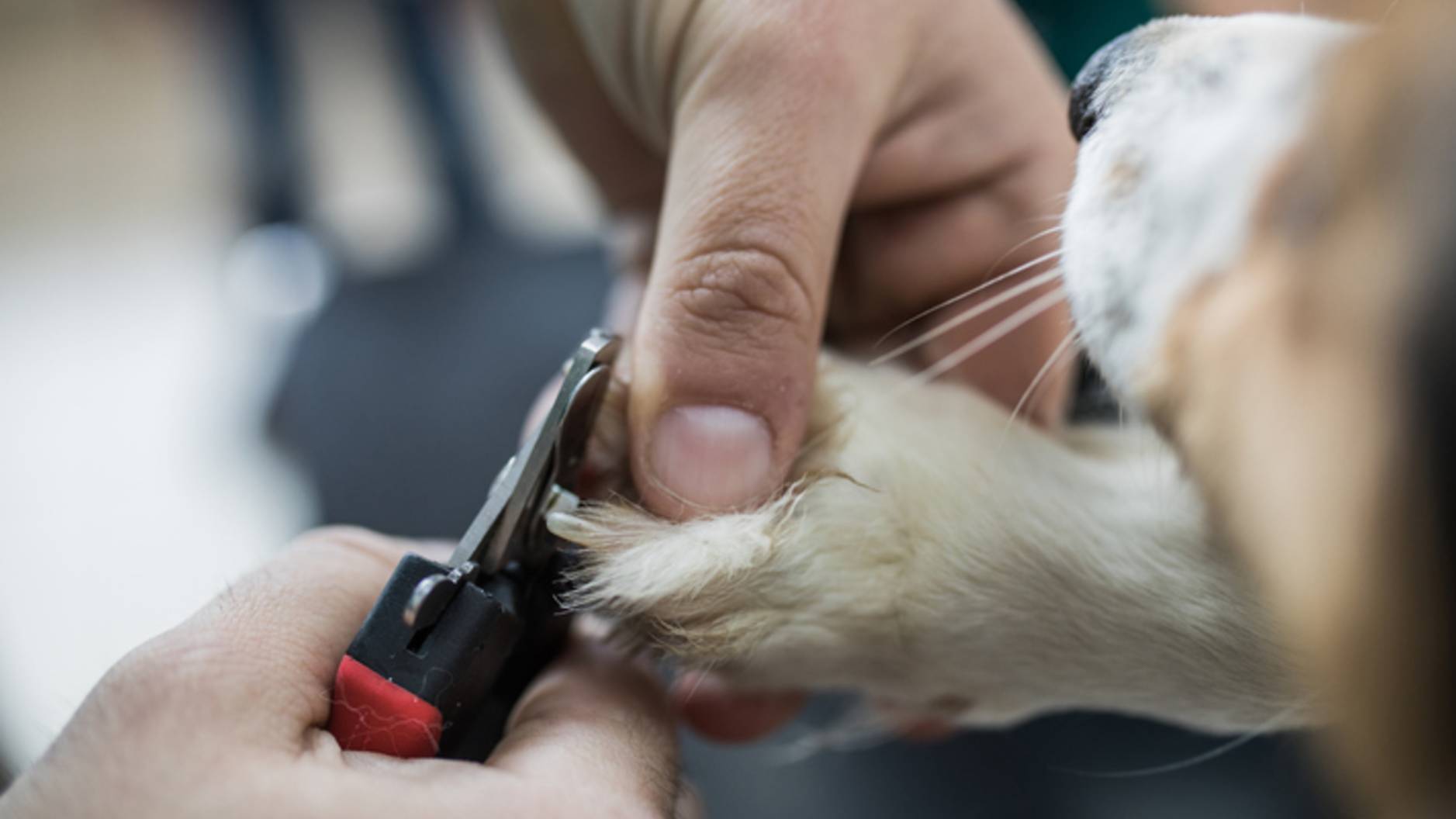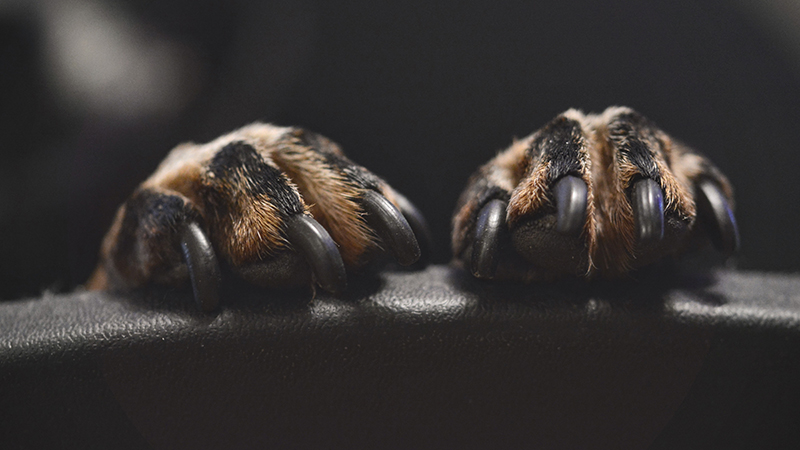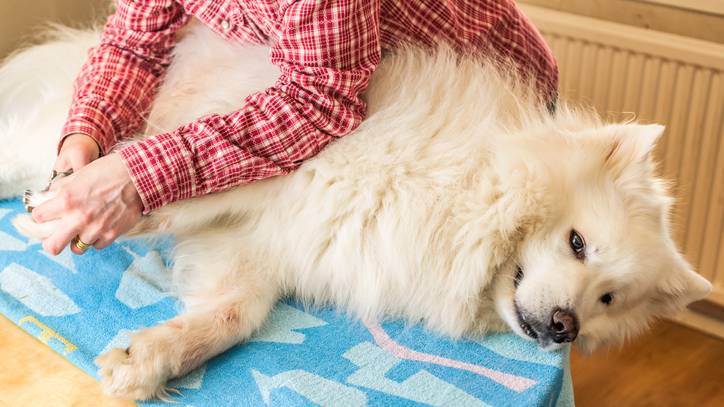How to use guillotine dog nail clippers: A vet's guide to clipping dog nails
Our vet explains how to use guillotine dog nail clippers to safely cut your dog’s nails

If you're wondering how to use guillotine dog nail clippers, either because you've never used this style before or are completely new to the job, then help is at hand.
Many pet owners are apprehensive about clipping their pet's nails, usually out of fear that they may accidentally trim back too much of the nail and cause their dog's nails to bleed. However, with the right guidance and the best dog nail clippers for the job, you can actually perform this task at home without needing to ask your vet or local groomer to do it for you.
From how to tell if your dog's nails need clipping in the first instance to what's the difference in types; how to hold guillotine dog nail clippers and how to use, our vet's guide will help you clip your dog's nails with ease and confidence.
How to tell if your dog’s nails need clipping
Before you jump into using guillotine dog nail clippers to cut your dog’s nails, it might be worth checking they need a trim. Most dogs do not need regular nail trims, especially if they’re exercised on hard surfaces. However, those always walked on grass or with especially hard nails may need them cutting regularly. Dogs are also more likely to need their nails cutting as they age.
If your dog has white nails, you can use the pink ‘quick’ to see whether your dog needs their nails trimming. The end of the claw should be around 2mm past the end of the quick. If your dog has darker nails, you’ll have to look carefully at the underside of the nail to decide if there’s too much hard nail past the soft area where the quick is. Our article on how to clip your dog’s nails has further information.

Are guillotine dog nail clippers better than bypass types? What’s the difference?
When choosing your dog nail clippers, you might have noticed several different types. Although they all look different, they fall into two main categories: the ‘bypass’, or ‘scissor’ type and the ‘guillotine’ type. There are also non-cutting types – like nail grinders and nail files – which may work well for some dogs.
‘Bypass’ or ‘scissor’ dog nail clippers have two sharp curved blades that move against each other – much like a pair of scissors or secateurs. You may also see this type called ‘plier’ nail clippers. These can either be sprung like secateurs, or not – like scissors – but they work in much the same way. They can be great for precise cuts, and on highly curved or small nails, but the spring ones work well in larger nails too. However, they blunt easily, and there’s no easy way to sharpen the blades, meaning you’ll have to replace the nail clippers entirely.
‘Guillotine’ nail clippers have a stationary blade (usually a hole or ‘ring’ shape) and one moving one (the ‘guillotine’) which slices the nail when you squeeze the handles. They make a straight cut, which can be really handy to avoid making your dog’s nail bleed. However, this straight cut can make life harder if a nail needs cutting at an angle. It’s also harder to get the dog nail clippers into position on little nails or highly curved nails.
How to use guillotine dog nail clippers
So, if you’ve chosen guillotine nail clippers for your dog, it’s time to look at how to use them. Firstly, squeeze them a few times without your dog there to make sure they’re sharp, and that the blade moves easily. Familiarise yourself with how they work, and make sure they’re comfortable to use.
You should also gather together other things you’ll need whilst you clip your dog’s nails – some treats, a muzzle, and a way to stop your dog’s nail from bleeding. You may also want someone who can hold your dog whilst you trim their claws.

How to hold dog nail clippers
Guillotine nail clippers and bypass clippers are held slightly differently. Unsprung ‘scissor’ bypass clippers are held using the finger holds – much like scissors are. Sprung bypass clippers are held in the palm of the hand, between the fleshy part of the thumb and the undersides of the four opposite fingers. With both types of bypass clippers, the clippers are held horizontally, so that the cutting blades cut the top and bottom of the nail, rather than side to side.
Guillotine clippers are held in a similar way to sprung bypass clippers – in the palm, with the underside of your four fingers squeezing shut to close the clippers – but you’ll need to approach the nail differently. Again, the aim is to cut the nail from bottom to top, not from side to side. So, you’ll need to hold the guillotine clippers upright, vertically, and perpendicular to the nail so that the blade crosses from bottom to top rather than crushing the nail side to side.
What is the guard for on dog nail clippers?
Some dog nail clippers come with a guard. This is usually a spinning or sliding piece of metal or plastic that sits just the other side of the cutting blade. A guard on nail clippers prevents you from cutting too much nail if your dog moves. It also encourages you to cut small amounts several times, rather than one big cut which could hurt your dog. However, most guards can be swung out of the way should you find a large cut is needed.

How to sharpen guillotine dog nail clippers
Most people do not take very good care of their nail clippers, but sharp clippers will be easier to cut with and cause less damage to your dog’s nails.
You’ll usually have to take your guillotine nail clippers apart to access the blade. You’ll also need to use a specialised sharpening rod. This is a long, thin, and rounded sharpening tool that fits in the curve of the nail clippers. The coating on the rod contains diamonds or similar materials to sharpen the blade.
Looking closely at your nail clipper blade, you’ll notice the metal is filed at an angle. This forms a cutting point along the length of the blade. To sharpen, simply rub your sharpening tool back and forth along the edge of the blade. If your rod is too horizontal, you’ll blunt the blade further – you want to rub it at the same angle as the cutting surface.
Final thoughts
So that’s how to use guillotine dog nail clippers. They’re great for medium sized dogs, and provide a clean, straight cut – but they can be a little more awkward to use. The blade is easier to sharpen than with bypass clippers though, meaning you can reuse the same clippers for years, saving money and the planet! If you’re struggling with clipping your dog’s nails, or aren’t sure if they should be clipped, it’s best to talk to your vet team.
PetsRadar Newsletter
Get the best advice, tips and top tech for your beloved Pets
After graduating as a vet from the University of Nottingham, Dr Joanna Woodnutt went on to practice companion animal medicine in the Midlands. Since then, she has also written for countless online and print publications and is a regular contributor for Edition Dog Magazine.

